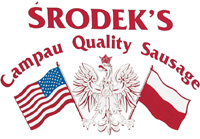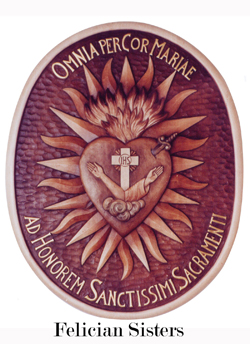|
POLISH WEST SIDE
Polonia, the universally used phrase to describe Polish communities outside Poland, is, in Michigan, frequently (and mistakenly) associated only with Hamtramck. Downriver, of course, has a bourgeoning Polish population, and as far back as 1978, industry had begun to expand to Detroit’s west side. Many Poles, formerly entrenched on the east side, followed.
The first west side Polish settlement extended from Twentieth to Twenty-third Streets, and the first west side Polish church, St. Casimir’s was built on the corner of Twenty-third and Myrtle. The parish grew so quickly that by 1890, a new church was required, this one modeled after St. Peter’s basilica. The immigration of Poles continued simultaneously, and by 1914, the Polish settlement covered a considerable portion of the west side, from Maybury Grand to Springwells and from the Michigan Central Railroad to Warren and McGraw. Many of the old residents of this neighborhood worked at the Ford Motor Company plant on Michigan Avenue.
Today, a Polish influence is still felt in many of Detroit’s upscale suburbs. In Troy, for example, nearly 10% of the population claims Polish ancestry, more than any other ethnic group besides German.
Dearborn’s Polish history is well-chronicled, pre-dating by far Henry Ford’s five dollar workday, extending back to when the city was founded as the first overnight stop on the stagecoach route linking Detroit to Chicago. Its streets are named for German Catholics, but they were gradually supplanted by the Polish communities. Today, Arab immigrants and their decedents make up nearly 20% of Dearborn’s population, but Poles still represent more than ten percent of the overall number of Dearborn’s citizens.
In Livonia, however, the Poles remain at the top of the census figures, accounting for 16.3 % of the population.
(Thanks to Jim Tye and Ceil Jensen for providing the above information.)
|







